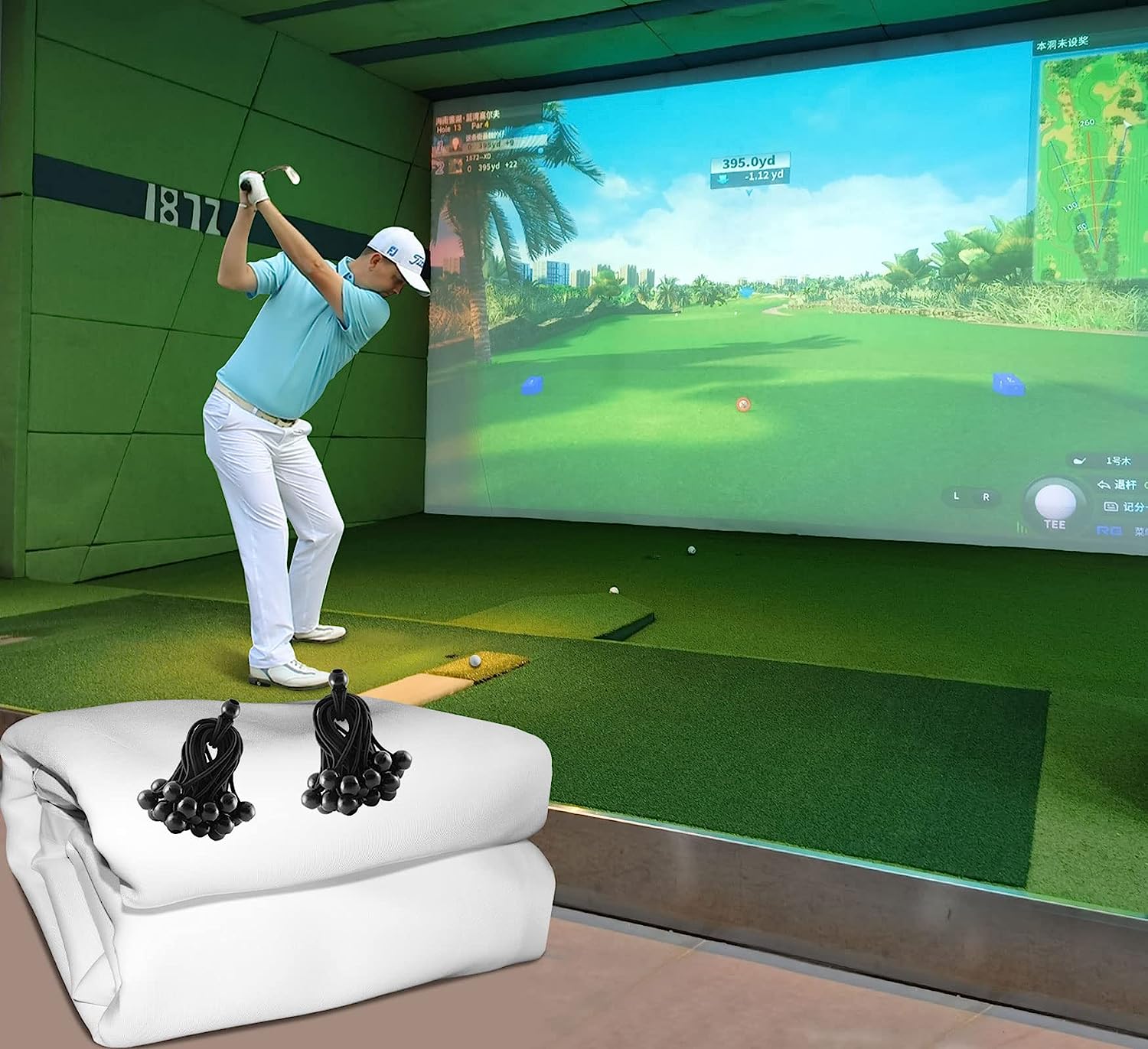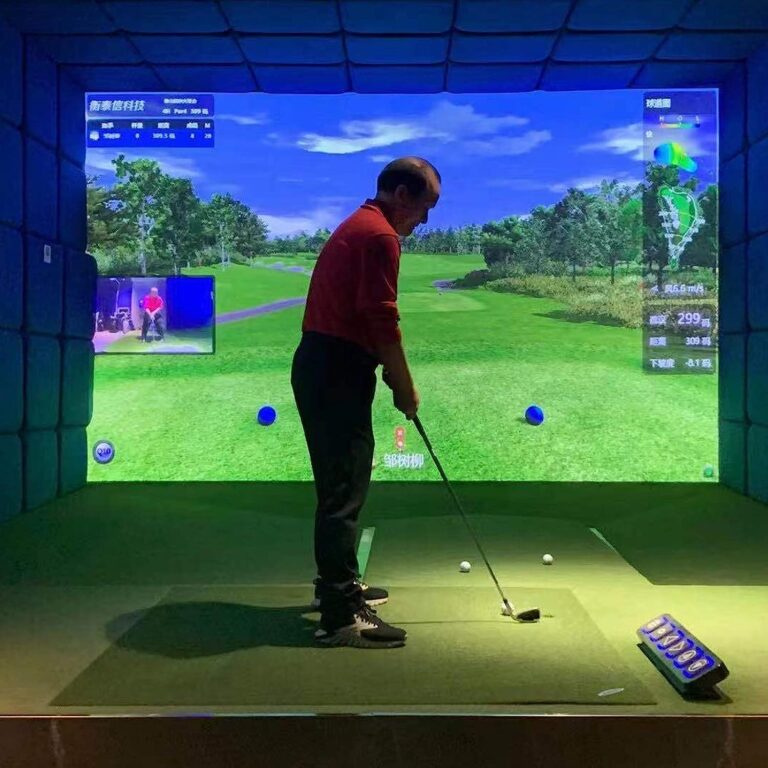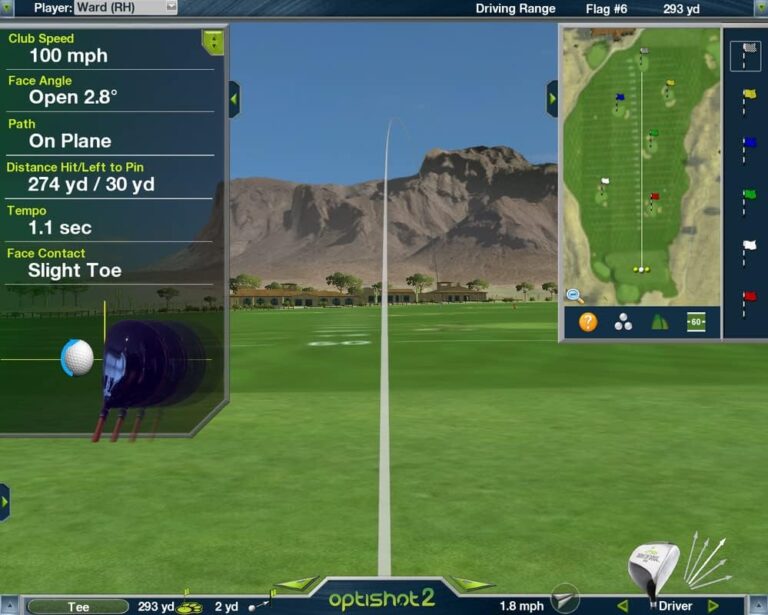how do golf simulators work
You all know that Golf is a sport that requires precision, skill, and practice. However, golfers cannot always rely on the weather to practice their swings. This is where golf simulators come in handy. A golf simulator is a high-tech system that allows golfers to practice their swings indoors in a simulated golf environment. But the question is, how do golf simulators work?
Before I dive into showing you how golf simulators work, I will first share some insights into the fundamentals of golf simulators.
Fundamentals of Golf Simulators
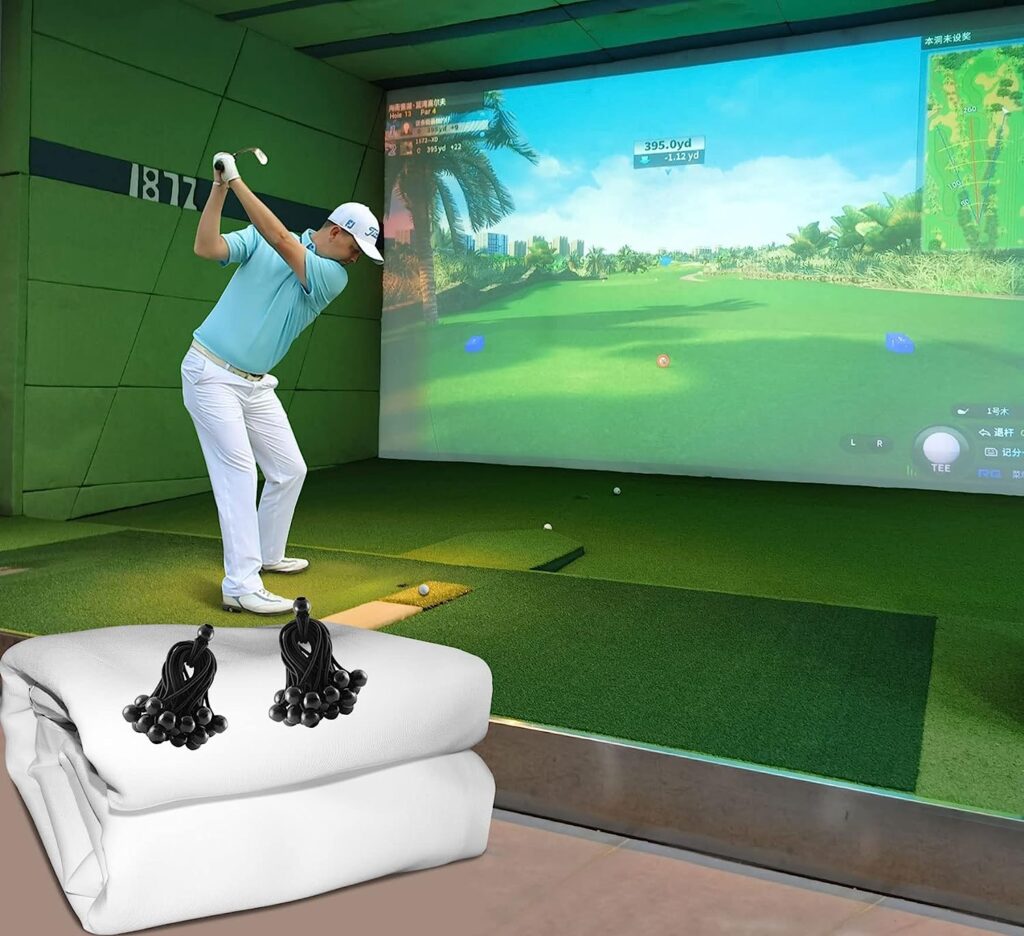
Golf simulators are advanced systems that allow golfers to practice and play golf in a virtual environment. They use a combination of hardware and software, including cameras, radars, optical sensors, hitting mats, screens, and sound systems.
A typical golf simulator setup consists of a hitting mat, a net or screen, a projector, and a computer. The golfer stands on the mat and hits the ball into the net or screen, which captures the ball’s trajectory and speed.
The projector then displays a virtual golf course on the screen, and the computer calculates the ball’s flight path and simulates the shot’s outcome.
To achieve accurate results, the golf simulator system must be calibrated correctly. This involves setting up the system according to the golfer’s height, swing speed, and other physical characteristics. The system also needs to be calibrated for the specific golf course being played to ensure accurate ball flight and terrain simulation.
Golf simulators can provide a range of data and feedback to the golfer, including ball speed, launch angle, spin rate, and distance. Some simulators also offer swing analysis and coaching tools to help golfers improve their game.
Overall, golf simulators are an excellent way for golfers to practice and play golf in a safe, controlled environment, regardless of weather conditions or time of day. With the right setup and calibration, golf simulators can provide an accurate and realistic golfing experience, allowing golfers to improve their game and enjoy the sport year-round.
Next, let’s look at the components of golf simulators.
Components of Golf Simulators
Golf simulators are composed of several components that work together to simulate the experience of playing golf on a real course. Here are the main components:
Launch Monitors
Launch monitors are devices that track the ball’s movement and collect data such as ball speed, launch angle, spin rate, and direction. They use different technologies such as radar, camera, or infrared sensors to capture the data. The data collected by launch monitors is then sent to the simulator software for analysis and simulation.
Simulator Software
Simulator software is the brain of the golf simulator. It takes the data collected by the launch monitor and uses it to create a virtual representation of the ball’s flight path.
The software also simulates the golf course, including the terrain, hazards, and weather conditions. The simulator software provides golfers with a realistic and immersive experience of playing on a real golf course.
Projector and Screen
The projector and screen are responsible for displaying the virtual golf course and the ball’s flight path. The projector projects the image onto the screen, which can be made of different materials such as fabric or vinyl. The screen is designed to withstand the impact of golf balls and prevent them from bouncing back.
Impact Screen
The impact screen is a special screen that is designed to withstand the impact of golf balls. It is made of durable materials such as vinyl or polyester and can be customized to fit the size of the simulator room. The impact screen is an essential component of the golf simulator as it protects the walls and furniture from damage caused by golf balls.
Tee Mats
Tee mats are used to simulate hitting off a real tee box. They are made of synthetic materials that mimic the feel of real grass. Tee mats come in different sizes and shapes to fit different simulator setups. They are designed to withstand the impact of golf clubs and provide a stable surface for golfers to hit from.
In summary, golf simulators are composed of several components that work together to provide golfers with a realistic and immersive experience of playing on a real golf course.
The launch monitor collects data on the ball’s movement, which is then analyzed and simulated by the simulator software. The projector and screen display the virtual golf course, while the impact screen and tee mats protect the simulator room and provide a stable surface for hitting from.
How do Golf Simulators Work?
Golf simulators are indoor setups that use advanced technology to replicate the experience of playing golf on a real course. They are used for practice, entertainment, and training purposes.
Golf simulators work by tracking the movement of the ball and the club using sensors, and then analyzing the data to provide feedback on the shot. In this section, we will explore the three main components of golf simulators: ball tracking, club tracking, and data analysis.
Ball Tracking
Ball tracking is the process of tracking the movement of the ball from the moment it is hit until it comes to a stop. There are two main types of ball-tracking systems used in golf simulators: photometric and radar. Photometric systems use high-speed cameras to capture images of the ball, while radar systems use radio waves to track the ball’s movement.
Photometric systems are more accurate than radar systems, but they require a larger space to operate. They are also more expensive than radar systems. Radar systems, on the other hand, are less accurate but can be used in smaller spaces and are more affordable.
Club Tracking
Club tracking is the process of tracking the movement of the club from the moment it is swung until it makes contact with the ball. There are several types of club tracking systems used in golf simulators, including optical, magnetic, and acoustic.
Optical systems use cameras to track the movement of the club, while magnetic systems use sensors to detect the movement of the club’s metal head. Acoustic systems use microphones to detect the sound of the club hitting the ball.
Data Analysis
Data analysis is the process of analyzing the data collected from the ball and club tracking systems to provide feedback on the shot. The data collected includes ball speed, launch angle, spin rate, and clubhead speed. This data is then used to create a virtual representation of the shot, which is displayed on a screen.
The virtual representation of the shot includes information about the trajectory of the ball, the distance it traveled, and the direction it went. This information is used to provide feedback on the shot, including suggestions for improvement.
By and large, golf simulators are indoor setups that use advanced technology to replicate the experience of playing golf on a real course.
They work by tracking the movement of the ball and the club using sensors, and then analyzing the data to provide feedback on the shot. Ball tracking, club tracking, and data analysis are the three main components of golf simulators.
Types of Golf Simulators
Golf simulators come in different types, each with its own unique features and capabilities. In this section, we will explore the three main types of golf simulators: Infrared Optical Sensor Systems, Camera-Based Systems, and Radar-Based Systems.
Infrared Optical Sensor Systems
Infrared Optical Sensor Systems use infrared technology to track the movement of the ball. The simulator sends out a light signal to track the ball’s movement, and the sensors capture the reflection of the signal to determine the ball’s trajectory.
These systems are highly accurate and can be used both indoors and outdoors. They are also relatively affordable compared to other types of golf simulators.
Camera-Based Systems
Camera-Based Systems use high-speed cameras to track the ball’s movement and provide a detailed analysis of the golfer’s swing and ball flight. The cameras capture the ball’s trajectory and speed, as well as the angle and speed of the clubhead.
These systems are highly accurate and can be used both indoors and outdoors. They are also relatively easy to set up and use.
Radar-Based Systems
Radar-Based Systems use Doppler radar technology to track the ball’s movement. The radar sends out a signal that bounces off the ball and returns to the radar, providing information on the ball’s speed, trajectory, and spin. These systems are highly accurate and can be used both indoors and outdoors. They are also relatively easy to set up and use.
Rounding up, each type of golf simulator has its own unique features and capabilities. Infrared Optical Sensor Systems are affordable and highly accurate, while Camera-Based Systems provide a detailed analysis of the golfer’s swing and ball flight.
Radar-Based Systems use Doppler radar technology to track the ball’s movement and provide accurate data on the ball’s speed, trajectory, and spin.
Benefits and Limitations of Golf Simulators
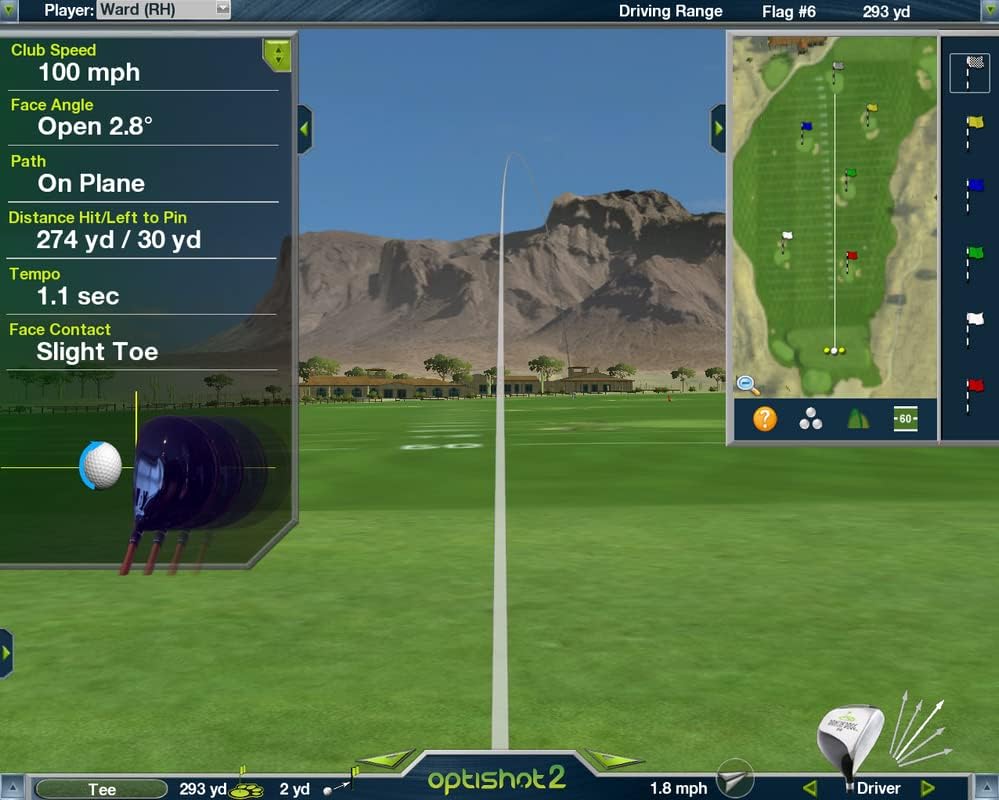
Golf simulators have become increasingly popular in recent years, and for good reason. They offer a variety of benefits that make them an attractive option for golfers of all skill levels. However, there are also some limitations to consider when using a golf simulator.
Benefits
Convenience
One of the biggest advantages of golf simulators is their convenience. Golfers can play a round of golf at any time of day, regardless of the weather conditions. This is especially beneficial for those who live in areas with harsh winters or rainy seasons, where outdoor golfing is not always possible.
Cost
Golf simulators can also be a cost-effective alternative to traditional golfing. While the initial investment can be significant, especially for high-end models, the long-term cost of using a simulator can be much lower than the cost of playing at a golf course. Golfers can save money on greens fees, transportation, and other expenses associated with playing at a physical course.
Customization
Golf simulators also offer a high degree of customization. Golfers can adjust various settings, such as course conditions, weather, and even the time of day. This allows golfers to practice specific shots and scenarios that they may encounter on a real course.
Limitations
Accuracy
While golf simulators are generally accurate, they may not be able to replicate the exact conditions of a real golf course. Factors such as wind, humidity, and other weather conditions can affect a golfer’s shots in ways that may not be fully captured by a simulator.
Space
Another limitation of golf simulators is the amount of space required to use them. High-end simulators can take up a significant amount of space, which may not be feasible for those with limited room in their homes or garages.
Cost
While cost can be a benefit of golf simulators, it can also be a limitation. High-end simulators can be quite expensive, and may not be feasible for those on a tight budget. Additionally, the cost of maintenance and repairs can add up over time.
Overall, golf simulators offer a convenient and cost-effective way for golfers to practice their game and enjoy the sport year-round. However, it’s important to consider the limitations of these simulators and weigh them against the benefits before making a decision to invest in one.
Choosing the Right Golf Simulator
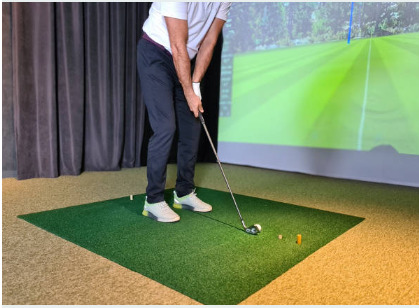
Choosing the right golf simulator can be a challenging task, as there are many factors to consider, such as accuracy, features, budget, space and installation. Here are some tips and resources to help you make an informed decision:
Accuracy: This is the most important feature for most golfers, as it determines how realistic and reliable the simulator is. The more accurate the simulator, the more expensive it will be.
The most accurate simulators use radar or camera-based launch monitors, such as TrackMan, Foresight GCQuad or SkyTrak+. These devices measure various parameters of your ball flight and club head data, such as speed, spin, launch angle, carry distance and more.
They also offer feedback and analysis tools to help you improve your game. However, these simulators can cost anywhere from $5K to $50K or more. If you are looking for a more affordable option, you can opt for simulators that use infrared or doppler radar sensors, such as OptiShot, Ernest Sports or Garmin R10.
These devices are less accurate and may not capture all the data, but they still offer simulated play on various courses and game modes. They can cost between $1K and $3K.
Features: Depending on your preferences and goals, you may want to look for different features in a golf simulator. Some of the common features are:
Courses: Most simulators offer a range of courses to play on, from famous ones like Pebble Beach and St Andrews to fictional ones. Some simulators have more courses than others, and some may require a subscription fee to access them. You may also want to check the quality and realism of the graphics and animations of the courses.
Game modes: Simulators can offer various game modes to make your practice more fun and challenging. Some of the popular game modes are stroke play, match play, closest to the pin, longest drive, skills challenge and more. You may also want to look for simulators that allow multiplayer options, online tournaments and leaderboards.
Feedback and analysis: Simulators can provide different types of feedback and analysis to help you improve your game. Some of the common feedback are ball flight trajectory, shot dispersion, impact location, swing path, and face angle. Some simulators also offer advanced analysis tools, such as video replay, 3D swing analysis, shot comparison and more.
Budget: As mentioned earlier, the price of a golf simulator can vary widely depending on the accuracy and features it offers. You may also need to factor in other costs, such as installation, maintenance, software updates, and subscriptions.
You may want to set a realistic budget for your simulator and compare different options within your range. You may also want to look for financing options or discounts from some retailers.
Space: Another important factor to consider is the space you have available for your golf simulator. You need to make sure you have enough room for your swing, screen, projector, launch monitor, and other accessories.
You also need to consider the height, width, and depth of your space, as well as the lighting, ventilation and soundproofing. The minimum space you need for a golf simulator is about 8.5 feet high, 10 feet wide, and 12 feet deep.
However, this may vary depending on your swing style, club length and simulator model. A comfortable space would be more like 10 feet high, 12 feet wide and 15 feet deep. You may also want to measure your space before buying a simulator and consult with a professional installer if needed

